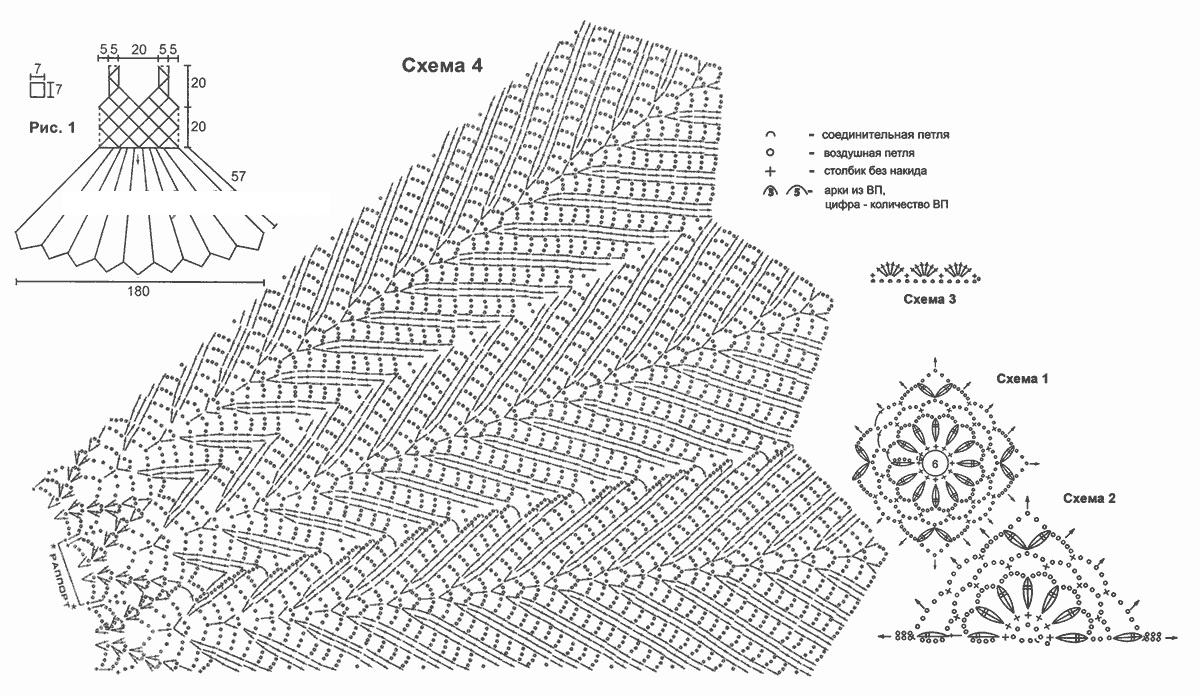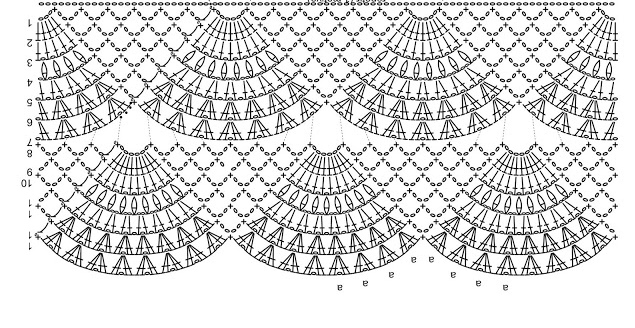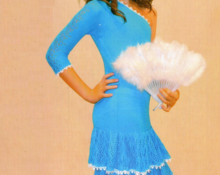 Masters have already created many crochet dresses for girls and women. The models are only being replenished, but the secret of each product is not always revealed to knitters. More than one beautiful product will be presented by the knitting master, but still the most beautiful and fashionable new items for the holiday are waiting to be made. After all, for them there are such simple and understandable descriptions, the presence of diagrams and all the subtleties that will definitely help to complete everything faster and without hesitation.
Masters have already created many crochet dresses for girls and women. The models are only being replenished, but the secret of each product is not always revealed to knitters. More than one beautiful product will be presented by the knitting master, but still the most beautiful and fashionable new items for the holiday are waiting to be made. After all, for them there are such simple and understandable descriptions, the presence of diagrams and all the subtleties that will definitely help to complete everything faster and without hesitation.
Patterns for openwork crochet dresses
It is very convenient to knit any product according to the pattern. But a dress is a special case, especially if it is crocheted. Many people thought, what about the sizes and different measurements. Everything is simple here, these are things in the store, cotton and various other fabrics can stretch poorly and should always be bought with a fitting. The good thing about knitted items is that many models fit well in both sizes 44 and 46. Therefore, sizing control can be somewhat relaxed.

A convenient option for a dress with a bodice made of motifs and a flared hem.

Beautiful dress with an original semicircle collar.

Expensive pattern for a straight cut.

The model has a pineapple pattern with a clear emphasis on the bevel for the neckline. A useful diagram for those who have chosen such an ancient pattern for their product.
Simple openwork dress for girls
A very simple and very elegant dress for a cute fashionista. You can knit it very quickly, since the crochet openwork pattern here is quite simple.

The work requires:
- blue iris yarn (for a size up to a year you need 10 balls of 25 grams each) pure cotton;
- hook number 0.85.
Stage: measurements. Take measurements from the child. Measure his chest circumference and be sure to measure his head circumference, as it is important that the neckline fits. And I didn’t have to put a little dress on the baby. The length can be adjusted after completing the front, knitting as many repeats as seems necessary for the girl. You can try on as you knit.
Stage: sample. Before assembling air loops for the shelf, you need to make sure that the width of the shelf is also suitable. To do this, cast on 30 stitches and knit several rows according to the pattern of the shelf fabric. Next, use a ruler to calculate the knitting density for the current pattern and evaluate how suitable the set is for the child.
Stage: front/back shelf. The diagram shows that the front and back are two completely identical parts of this dress and therefore it is easy to knit them according to the given pattern.

Stage: hem. The fun part is creating the hem. But it will be more convenient to knit it after sewing the shelves, which is what you should do immediately after knitting them. Next, knit the hem in the circle from the bottom line of the bodice. As a result, the model will have 14 repeats throughout the circle. There is no need to knit a hem that is too long for a child.It looks beautiful long, but the baby will not be so comfortable in such a product and therefore the optimal hem length for a child is along the knee line.

Stage: strapping. Use simple peaks as binding. Pico in this case is three loops knitted from one place and secured in the same place with a connecting loop.
So a simple model for summer walks is ready.
Flared dress for girls
A very cute and appetizing white crochet dress model. The model is loose and made with thin lace.

The work requires:
- white iris yarn;
- hook number 0.85.
Stage: raglan. All measurements are for size 6 months. Raglan is done according to the pattern from top to bottom. Knit only 20 rows.

Stage: hem. After raglan, go to the mesh pattern and immediately weed out the sleeves, and continue knitting only the front and back parts. And do it in a circle.
Knit 18 cm of mesh with gradual additions of 6 repeats through 4 rows.

Stage: border. The very last element in the hem of such a cute product will be a beautiful border. For it, you need to switch from a grid pattern to a border pattern. The number of repeats may vary, but in this case only 8 repeats were used throughout the circle. Tie the border around the end of the bodice along with the sleeves. You will get a large circle around the entire perimeter of the product.

Stage: decorations. The end of all this unprecedented luxury will be charming flowers, which can be made using a pink satin ribbon and a bow made from a white ribbon. Place these small decorations along the edge of the hem. But it’s better to sew a larger bow to the front shelf.
Description of knitting an openwork dress for a woman
Beautiful translucent dress with three laces.

The work requires:
- thin cotton thread;
- hook number 0.85.



Use patterns in different sequences to create a beautiful lace dress. It is better to use in small strips of 15 cm.
Stage: front/back. The interesting thing about the model is that the back and front have the same neckline depth. It is almost square, but with good roundings. Knit from the front line where the flounce extension begins. Apply the pattern in a chaotic manner. Initially, knit a small sample for each of the patterns. For the circumference of the hips, calculate how many loops are needed in the pattern according to the pattern for the first pattern. Knit and make small decreases in each repeat. Make decreases to the waist line. It is worth noting that here the waistline is noticeably high. After the waist line, make small increases and knit without changes to the level of the armhole. For a smooth transition, it is worth covering in small portions: 6,4,3, then knit 2 cm and proceed to the neckline. Here also make a neat rounding and knit the sides for the shoulders to the required height.
Stage: shuttlecock. Make a shuttlecock after stitching the shelves. Knit in circular rows and according to pattern number two, and then number 3. For the border, make a binding with shells.

Petticoat for an openwork dress
 Pay special attention to the petticoat, as the fiber is too transparent. For the petticoat, cut out a skirt. It is better to use knee length and not too tight. Fold the edge of the fabric and sew in an elastic band. Next, overcast the edges of the skirt and the petticoat is ready. For the width of the fabric, make 2 waist circumferences.
Pay special attention to the petticoat, as the fiber is too transparent. For the petticoat, cut out a skirt. It is better to use knee length and not too tight. Fold the edge of the fabric and sew in an elastic band. Next, overcast the edges of the skirt and the petticoat is ready. For the width of the fabric, make 2 waist circumferences.
How to Wear a Lace Dress
The dress code does not allow wearing an openwork dress with a too transparent pattern; wearing it without a petticoat. Therefore, it is worth paying special attention to this when making the product. Otherwise, the dress will lie without wear.


 0
0





